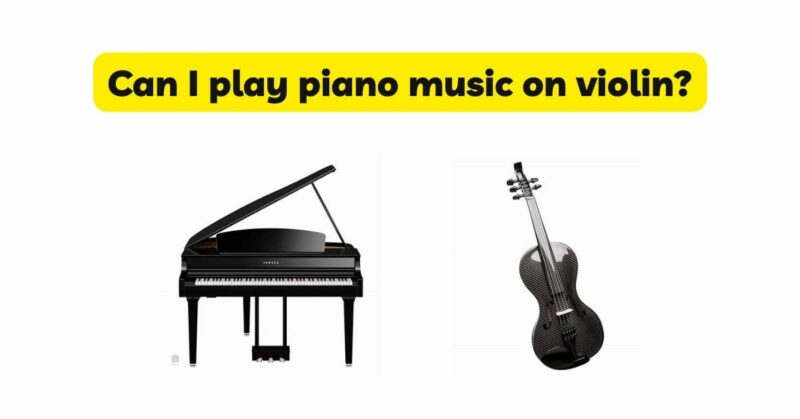Music is a universal language that transcends boundaries and has the power to evoke emotions in all who listen. As a musician, you may find yourself captivated by the enchanting melodies created on different instruments, such as the piano and the violin. If you’re a violinist with a deep love for piano music, you may wonder if it is possible to play piano music on the violin. In this article, we will delve into the world of translating piano music to the violin, exploring the challenges and possibilities that arise when venturing into this unique musical journey.
Understanding the Differences: Before delving into the intricacies of translating piano music to the violin, it is essential to comprehend the fundamental differences between these two instruments. The piano is a percussive instrument with a vast range of notes, capable of playing multiple voices simultaneously. On the other hand, the violin is a stringed instrument that relies on bowing techniques and finger placements to produce sound. The violin’s range is limited compared to the piano, and playing chords on the violin can be particularly challenging due to its four-string nature.
Adapting Piano Music for Violin: Translating piano music to the violin requires careful adaptation, taking into consideration the technical limitations and unique characteristics of the violin. The first step in this process is to analyze the piano piece and identify the melodic lines, harmonies, and structural elements that form its essence. The violinist must then decide how to recreate these elements within the violin’s capabilities.
Melodic Lines: When translating a piano melody to the violin, the violinist needs to consider the violin’s range and adjust the pitch accordingly. Violinists often have to make octave adjustments to ensure that the melody stays within their instrument’s playable range. Additionally, the violin’s inability to sustain notes as long as the piano requires careful bowing techniques to maintain the melodic flow.
Harmonies and Chords: The violin’s limited ability to play chords necessitates adapting piano chords into arpeggios or broken chords on the violin. This technique involves playing the individual notes of the chord consecutively, creating a flowing and harmonious effect. While the violin cannot replicate the piano’s rich harmonic texture, skilled violinists can still convey the essence of the original piece through careful arrangement and interpretation.
Technical Challenges: Translating piano music to the violin presents several technical challenges. One such challenge is the need to maintain a smooth legato when playing rapid passages. The violinist must develop agility and dexterity in their bowing and left-hand techniques to replicate the fluidity of the piano.
Another challenge is the dynamic range of the piano, which is much wider than that of the violin. While the piano can produce a vast range of volumes, the violin requires skillful control of the bowing pressure and speed to express the same level of dynamics.
Artistic Interpretation: When adapting piano music to the violin, it is crucial to remember that the violin has its own unique voice and expressiveness. While striving to remain faithful to the original piece, violinists should also embrace the interpretative possibilities their instrument offers. Experimenting with phrasing, ornamentation, and vibrato can bring a fresh perspective to the adapted composition, infusing it with the violin’s characteristic warmth and expressiveness.
Examples of Successful Adaptations: Throughout history, numerous violinists have successfully adapted piano compositions, demonstrating the violin’s versatility and expressive capabilities. Legendary violinist Jascha Heifetz, for example, adapted several piano pieces, including Johann Sebastian Bach’s solo violin works and Franz Schubert’s “Ave Maria.” These adaptations showcased the violin’s potential to captivate audiences with their unique interpretation of well-known piano music.
Conclusion: Playing piano music on the violin is indeed possible, although it requires careful adaptation and understanding of the limitations and unique qualities of each instrument. By analyzing the original piano composition and skillfully translating it to the violin, musicians can unlock new artistic possibilities and create beautiful renditions that captivate listeners.
Translating piano music to the violin not only showcases the versatility of these instruments but also enriches the musical landscape by introducing new interpretations and perspectives. As a violinist, dare to embark on this musical journey and explore the immense beauty that lies within the realm of translating piano music to the violin.


